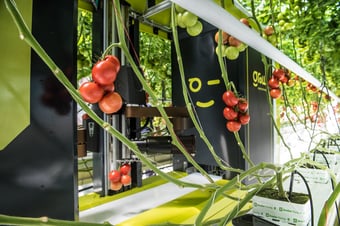Many producers have retrofitted their greenhouses to include integrated systems that provide production efficiencies through automation and smart technology. The possibilities are endless when it comes to automating greenhouses by implementing technology. To further horticulture automation, the integration of advanced AI robotic systems and harvest robots into the greenhouse is on the horizon.
Integrating robotics into the greenhouse will only provide further opportunities for advancements. While greenhouse robots may start with harvesting tomatoes, the potential to implement additional technology for monitoring crop health is endless.
The biggest trends & developments in horticulture
One of the biggest trends in horticulture includes a push toward autonomous greenhouse production. The emphasis on greenhouse automation is mainly due to the opportunity that automation can provide. With greenhouse automation comes the potential to improve the scalability of the operation while safeguarding business continuity and delivering superior crops. Automated systems also tend to gather data that can be integrated, interpreted, and used to improve operational efficiency and sustainability.
Advancements in greenhouse automation to date have enhanced horticulture production, greatly. An emerging trend in automation is the development of robots for the greenhouse. Greenhouse robots have the potential to improve production even more while creating a foundation for future innovation. If total greenhouse automation is the goal, developing greenhouse robots like the GRoW tomato harvest robot is essential.
What is the GRoW tomato harvest robot?
The GRoW Tomato Harvesting Robot has two arms that can delicately harvest tomatoes on both sides of the row simultaneously. While this may sound simple, it is no small feat, given that damaging tomatoes during harvest can often occur. Not only that, but the GRoW tomato harvest robot's two arms can quickly and efficiently do the work of multiple workers without stopping and with consistent quality. Implementing the GRoW tomato harvest robot in the greenhouse increases production efficiency and sustainability, which leads to cost savings. Currently, the robot can only harvest tomatoes, but GRoW is designed with the future in mind. As technology advances, so will GRoW. There is strong potential for GRoW to one day include yield prediction, sickness detection, plant health diagnostics and improve data-driven management. You could say that investing in GRoW is investing in the future.
Robotics in Horticulture: The future is here
To learn more about the role and opportunity of robotics in horticulture, subscribe to our GRoW newsletter and make sure you are one of the first to know about the newest developments, trends and insights.




